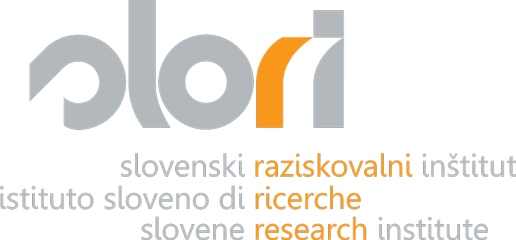Štefan Čok, Anja Škarabot (editors)
Trieste, SLORI, 2019
The volume entitled Zamejski, obmejni, čezmejni: Slovenci v Furlaniji – Julijski krajini deset let po vstopu Slovenije v šengensko območje / Dietro, a ridosso, oltre il confine. Gli Sloveni in Friuli Venezia Giulia a dieci anni dall’ingresso della Slovenia nell’area Schengen (eng. Behind, close to and beyond the border: Slovenes in the Friuli Venezia Giulia region ten years after Slovenia’s accession to the Schengen area) was published as part of the project having the same name, which received funding from the Friuli Venezia Giulia Autonomous Region thanks to an extraordinary call for proposals as per provisions of Regional Law 25/2016 art. 67, paragraph 7(e).
The publication is divided into three sections: the first and third sections contain the papers that were presented at the project’s closing event, which took place in the town of Gorizia on 18 and 19 October 2018, while the second section comprises the papers that were presented during the two introductory meetings, which took place in the towns of Tarvisio and Muggia on 7 and 21 September 2018 respectively.
The first section of the publication (Gorizia, October 2018) focuses on general concerns in the border region between Slovenia and Italy and discusses them from different viewpoints.
The second section of the publication contains the essays presented during the two introductory meetings which took place on opposite ends of the Slovene-Italian border and adopts a geographical approach. The fourth chapter deals with the tri-border area between Italy, Slovenia and Austria, with a distinct focus on the Val Canale region, while the fifth chapter focuses on the southernmost part of the border region, namely the area of northern Istria and Muggia.
The last section (Gorizia, 19 October 2018) focuses on the Slovene ethnic minority in the Friuli Venezia Giulia region.
The volume also includes some digital resources: by scanning the QR-code or accessing the link provided in the publication, readers can watch a short video filmed by a group of young people, which contains several interesting facts about the border between Slovenia and Italy.
Underpinning both the publication and the project is the conviction that the abolition of border controls represents a crucial milestone for relations between the two neighbouring countries. Since the establishment of contemporary nation states, free movement of people across borders is an exception rather than the rule. This is why the ratification of the Schengen Treaty is an invaluable achievement that is often taken for granted. To preserve the liberties enshrined in the Treaty, we need to remain vigilant and committed to solving any problems that may arise from the abolition of border controls.
It is evident that the Slovene ethnic minority in the Friuli Venezia Giulia region plays a vital role in this border area. The minority’s future development opportunities, as well as the development opportunities of the whole region, depend to a great extent on the community’s ability to take active part in new cross-border dynamics resulting from the implementation of the Schengen Treaty.
The publication is available in:
